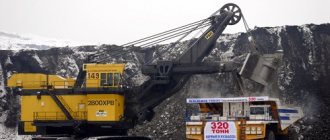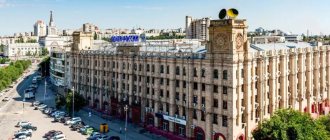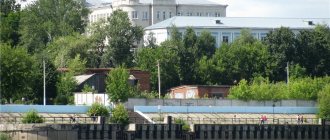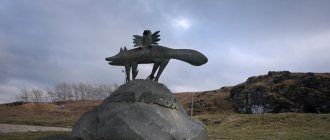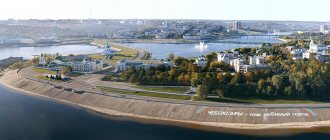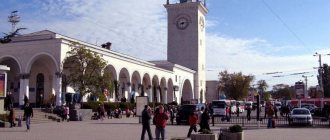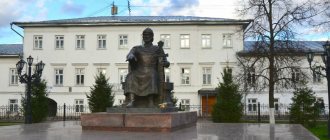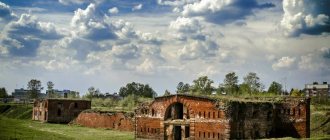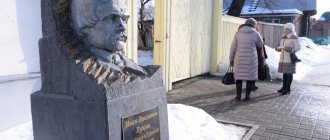The National Museum of the Komi Republic is located in the city of Syktyvkar. It is one of the largest cultural, educational and scientific institutions in the region. It was founded in the fall of 1911 on the initiative of local historians and urban intelligentsia, among whom were A. Tsember, K. Zhakov, N. Cheusov and others.
The museum fund initially included a small collection of archaeological, paleontological and ethnographic objects. The exhibits were housed in the city library building, in one of its rooms. At that time, the museum was financed by private donations, as well as small allowances received from the city duma and zemstvo. The status of a regional museum was received in 1923. In those years, the museum’s collections were being actively acquired; many of the items collected at that time today constitute the most rare and valuable part of its holdings.
In October 1940 it was reorganized into the Republican Museum of Local Lore. It was given the status of a National Museum in 1994.
Photo and description
Monument to I.A.
Kuratov is located in front of the building of the Opera and Ballet Theater of the Komi Republic in the city of Syktyvkar. Ivan Alekseevich Kuratov was born in 1839 into the family of a sexton in the village of Kebra, Ust-Sysolsky district, Vologda province (now the village of Kuratovo, Sysolsky district of the Republic of Kazakhstan). In 1854 he graduated from the Yarensky Theological School. From 1854 to 1860 he studied at the theological seminary in Vologda. The goal of his life’s journey was defined in the poem “The Life of a Man” (1857) - to give happiness to his native people. Ivan Alekseevich Kuratov is deservedly recognized as the founder of Komi literature. At the age of 13, in seminary, he began writing poetry and continued to engage in poetic creativity until the end of his life. A highly fruitful period of his life was the time spent in Ust-Sysolsk (now the city of Syktyvkar), where Ivan Alekseevich arrived in 1861 after an unsuccessful attempt to continue his studies in Moscow. Here he began teaching literacy to peasant children, worked on linguistic literature and, of course, created poetry. He lived in a two-story wooden house, which was later demolished. Now at this place (Ordzhonikidze Street, 10) in a residential building there is the Literary and Memorial Museum of I.A. Kuratova. Then Ivan Alekseevich moved to Kazan, where for a short time he served as regimental auditor. Since 1866 he lived in Central Asia. He died in the city of Verny (now the city of Alma-Ata) in 1875.
During his lifetime, Ivan Alekseevich Kuratov published only 5 poetic works under a pseudonym, which is noteworthy, under the guise of Komi folk songs and translated into Russian. Kuratov's poetry is distinguished by its genre diversity. This is love poetry, sharp satire, everyday sketches, a philosophical parable, a historical story, a poem, a fable, a periphrase, an epigram, a parody. The main place in Kuratov’s poetry is occupied by socio-political and philosophical views, in a significant sense colored by national (Komi) self-awareness.
In addition, Ivan Alekseevich was engaged in translations of works from Russian by such geniuses as Ivan Andreevich Krylov, Alexander Sergeevich Pushkin and others, as well as foreign classics of world literature: Robert Burns, Horace.
Kuratov paid great attention to the study of the Komi-Zyrian language, created a grammar of the Komi language, and at the same time studied the grammar of the Mari and Udmurt languages. Ivan Alekseevich firmly defended the principles of a humanistic worldview, justice and legality, and until the end of his life he fearlessly fought against high-ranking violators of law and order.
Kuratov readings are organized annually in Syktyvkar. A humanities and pedagogical college and one of the central streets of Syktyvkar are named after him.
Source
The “father” of the Soviet atomic bomb, Igor Vasilyevich Kurchatov, was born in the city of Sim
The name of this scientist has always been associated with the creation of atomic weapons and with the Beloyarsk Nuclear Power Plant. I. V. Kurchatova (BNPP). Several years ago, the author of this material had the opportunity to visit two blocks of this power plant. But now I was able to visit the city of Sim, Chelyabinsk region, where Igor Vasilyevich Kurchatov was born.
From iron production to aircraft units
In the mid-eighteenth century, industry was rapidly developing in the Ural region. One by one, factories were built, mostly iron foundries and ironworks. At this time, a whole galaxy of talented breeders clearly showed themselves.
Such entrepreneurs may well include two Simbirsk merchants, Ivan Borisovich Tverdyshev and Ivan Semenovich Myasnikov. The Simsky plant owes its birth to these two people. Initially, the plant specialized in the production of cast iron, and with the launch of blast furnaces it switched to full-scale foundry production.
With the outbreak of the First World War, the Simsk plant was one of the first in the Urals to produce military products. Two years later, up to half of the production was projectile steel. During the Great Patriotic War, the production of aviation units for military aircraft was established in Sima at two evacuated factories.
Having retrained to produce products for the air force, the plant eventually became known as PJSC “Agregat”.
Family of an outstanding physicist
In the history of Sim there are names not only of industrialists and outstanding personalities who showed themselves in the development of the plant and the city. A special place is occupied by the page associated with the name of the outstanding scientist, three times Hero of Socialist Labor Igor Vasilievich Kurchatov.
I. V. Kurchatov
The future founder of the nuclear industry in the USSR was born in Sima in 1903. It is known that Igor Vasilyevich’s paternal grandfather, Alexey Konstantinovich, came from a serf family.
At the Simsky plant, he was first a craftsman, and later the plant treasurer. My grandfather's family had ten children. Maternal grandfather - Vasily Antonovich Ostroumov served as a parish priest.
Igor Vasilyevich’s father, Vasily Alekseevich Kurchatov, was an honorary citizen of Sim. He worked as an assistant forester for forestry and land management at the Simsk Mining and Plant Dacha. With his moves to Simbirsk and later to Tauride province, Vasily Alekseevich served as a land surveyor.
Igor Vasilyevich’s mother, Maria Vasilievna Kurchatova (nee Ostroumova), worked as a teacher at the Ufa Zlatoust Nikolsky School before her marriage.
The Kurchatov family was associated with Sim for many years, so it is absolutely fair that in 1977, a monument to Igor Vasilyevich Kurchatov was erected on the factory site of the future PJSC Aggregat.
Monument to Kurchatov in Sima
Formal difficulties in installing the monument
The monument was designed by sculptor A.D. Shcherbakov and architect G.A. Zakharov. The height of the pedestal with the bust is 4 meters. As local historians from Sim say, by the time the monument was installed, Igor Vasilyevich Kurchatov had been a Hero of Socialist Labor three times (1949, 1951, 1954), but only two Hero Stars had to be shown on the bust.
According to the existing situation, each twice Hero was supposed to have a bust erected in his homeland. Since such a bust was not installed in Sima in 1951, albeit for objective reasons, then this defect first had to be corrected.
On the pedestal, below the main memorial plaque, another one was attached, where it was indicated that Igor Vasilyevich was awarded the third Star of the Hero of Socialist Labor in 1954. During his short life, which lasted only 57 years, Igor Vasilyevich also became a laureate of the Lenin Prize and four Stalin Prizes.
It is symbolic that next to the bust of the great scientist there is one of the oldest churches in the Chelyabinsk region in honor of the Holy Great Martyr Dmitry of Thessaloniki. Surely, Igor Vasilyevich’s ancestors came here to pray.
There are memories that the scientist himself, before testing the Soviet atomic bomb, stood for a long time and was silent in front of the image of Hodegetria in the Novodevichy Convent in Moscow.
Church of St. Dmitry Solunsky
Author: Alexey Gerasimov Photo: Sergey Suvorov
Read also about Sim and its attractions: Sim is a city with all the beauty of the Southern Urals
Project “Small Towns - Amazing Sights 2021”
Sights of the city of Syktyvkar - the capital of the Komi Republic
The official founding date of Syktyvkar, first mentioned under the name Ust-Sysola in the chronicles of the 16th century, is considered to be 1780, when by decree of Catherine the Great the churchyard with a population of 1727 people received the status of a county town. By the beginning of the 19th century. The policy turned into a significant trading center of the Russian North. After the October Revolution, industry began to develop in the city and its surroundings, cultural and educational institutions appeared, and in 1936 it became the capital of the Komi Autonomous Soviet Socialist Republic. Today, more than 250 thousand people live in Syktyvkar. An inquisitive tourist will be interested in visiting here.
The main attractions of Syktyvkar: TOP-5
Acquaintance with any city in the world begins with an examination of historical and architectural monuments, which are considered to be its calling cards. The sights of Syktyvkar fall into this category, photos and descriptions of which you will find in this section.
Monument to Labor Glory of the Komi ASSR
One of the calling cards of the city is rightly considered to be the stele installed in the center of the transport ring at the intersection of Kommunisticheskaya Street and Oktyabrsky Prospekt. The monument was inaugurated in 1977. The composition consists of three stelae, stylized as banners and connected in the upper third by metal plates with high reliefs of the Orders of the October Revolution, Friendship of Peoples, and Lenin. The Komi Republic was awarded these awards for its contribution to ensuring the economic power of the USSR. The height of the monument is 22 m. It is lined with titanium plates and looks very impressive.
St. Stephen's Cathedral
The cathedral, consecrated in the name of St. Stephen of Perm in 1896, was considered the main Orthodox church of the city before the October Revolution. During the period of persecution of religion, it was first closed and then the building was completely dismantled. At the beginning of this century, the authorities, following numerous requests from parishioners, decided to restore the church. Construction was completed on the 600th anniversary of the death of St. Stephen. The white stone cathedral, the main dome of which rises 64 m, was built in the best traditions of ancient Russian religious architecture and is very similar to the temples of Vladimir or Vologda . The majestic building is rightfully one of the main attractions of Syktyvkar.
Memorial "Eternal Glory"
During the Second World War, almost 14 thousand Syktyvkar residents went to the front, where they fought without sparing their lives for the liberation of their homeland from the Nazis. Many of them were not destined to return from the battlefields. In order for the memory of the heroes to be preserved in the hearts of descendants, a memorial was built, inaugurated in the year of the 35th anniversary of the Victory. Its dominant feature is a sculptural composition of three figures. Bronze sculptures depict the mother, wife and daughter of a soldier holding a cedar branch entwined with a St. George ribbon in their hands. The Eternal Flame spits out flames in front of them. Behind the sculptures there is a stele with the names of the townspeople who died for the Fatherland in that war.
Fire Tower
In the 19th century Most of the buildings in Syktyvkar were built of wood, so fires, which occurred quite often, caused significant damage to the city. Brave firefighters stood up to the elements. A building was erected especially for them in 1901, from the high tower of which almost the entire policy was viewed. It immediately became one of the architectural pearls due to the originality of its decor. On the front side of the two-story mansion there are five arched gates through which horse-drawn fire crews drove out. The octagonal tower, covered with a hipped dome topped with a weather vane, gives the building a resemblance to a small castle.
Monument to I. Kuratov
I. A. Kuratov, a writer and philologist who lived in the 19th century, is considered the founder of national literature. In 1977, his memory was immortalized monumentally. Then, on the square in front of the Opera House, a new monument was solemnly opened. The bronze statue of Ivan Alekseevich, depicted in moments of inspiration, is placed on a massive concrete pedestal. Kuratov walks leisurely, as if pondering one of the poetic stanzas. There is a commemorative inscription embossed in bronze on the pedestal.
Soviet Syktyvkar: legends and reality
The next educational walk around Syktyvkar was a continuation of a similar excursion that took place at the end of 2022 (“Respublika” dated January 14, 2022). However, if last year’s route passed through the historical part of the city, this time journalist and writer Igor Bobrakov opened unknown and little-known pages of the capital of Komi during the Soviet period.
Mysterious “telegram” from Pitirim Sorokin
The excursion started near the main building of Syktyvkar University - a place not designated by the general plan of Ust-Sysolsk in 1783. Moreover, until the early 60s of the last century there were fields here, not a single house stood.
The university, now named after the outstanding Russian-American sociologist Pitirim Sorokin, opened in 1972, and the first students had no idea about their great fellow countryman. In honor of the anniversary celebrated in the same year, the young university was given the name “50th anniversary of the formation of the USSR.”
For the first time, SSU students heard about the famous sociologist in their second year, when they had to take notes on Lenin’s work “Valuable Confessions of Pitirim Sorokin” in the now defunct subject “History of the CPSU.”
– This subject was taught to us by Yuri Rapoport. He so emotionally attacked Pitirim Sorokin that I and many others began to sympathize with this enemy of the Soviet regime,” said Igor Bobrakov. “At the same time, Yuri Mikhailovich told us that Sorokin is a native of the Komi region and a professor at Harvard University, for which I am grateful to Rapoport.
After this, two legends were born, which students passed on to each other by word of mouth. The first is that Professor Sorokin sent a congratulatory telegram for the opening of SSU, but, of course, it was not read, but, on the contrary, was hidden deeply. The second one appeared a little later. Allegedly, after his death, Pitirim Sorokin bequeathed his entire huge library to Syktyvkar University, and that is why the library collection of Syktyvkar State University is no poorer than in the capital’s universities.
New building of the pedagogical institute
“I believed in both of these legends until 1991, when Pitirim Sorokin’s autobiographical novel “The Long Way” was published in Syktyvkar,” the journalist admitted. “Then I found out that the overseas professor died in 1968, and therefore he could neither send a telegram nor bequeath his library to our university. Now, after I delved into his biography while working on the play “Pitirim Sorokin,” I can say that if he were alive, I would definitely send a telegram. He was not an enemy of our country; during the war he persistently called for opening a second front, and together with his wife he participated in the creation of the Fund for Assistance to Warring Russia. And he never forgot about his roots.
The monument to Pitirim Sorokin near the main building of SSU was opened in August 2014, and the following year the university was named after him.
“A debate immediately broke out: is it worth naming the university after a person who made no contribution to the development of the Komi Republic,” said Igor Bobrakov. – Some say that since Pitirim Sorokin is known all over the world, such a name gives the university additional significance. Others believe that the main university in the region should be named after the first rector Valentina Vityazeva. In fact, SSU owes its existence to three people: the Chairman of the Council of Ministers of the Komi Autonomous Soviet Socialist Republic Zosima Vasilyevich Panev, the head of the Central Statistical Office of the USSR Vladimir Nikonovich Starovsky and, of course, Valentina Aleksandrovna Vityazeva.
The Chairman of the Council of Ministers tried to “break through” the university back in the late 1950s. But calculations showed that its creation would cost approximately the same amount as the construction of the Syktyvkar-Mikun railway. The road was much more important then.
In the 60s of the last century, the organization of a university became an urgent need: the rapidly developing republic needed its own doctors, lawyers, economists, and there was a catastrophic shortage of its teachers. But visiting specialists did not stay long in the northern republic. Moscow proposed creating a university on the basis of an already existing pedagogical institute, but Zosima Panev understood that such an approach would not solve the personnel problem, and insisted on a university in addition to the pedagogical institute. But high-ranking Moscow officials asked the question: “Where will you get the personnel?” Starovsky found the answer. He instructed his subordinates to find out how many doctors and candidates of science are Komi by nationality in the country. It turned out that there were 17 doctors and 148 candidates. In addition, 12 doctors and 146 candidates of sciences of non-indigenous nationality worked in the Komi ASSR. And all with different specialties. Thus, a completely respectable teaching staff was recruited. Vladimir Starovsky personally spoke with some ministers, and in the end the issue with the university was resolved.
On September 1, 1972, Zosima Panev, at that time Chairman of the Presidium of the Supreme Council of the Komi ASSR, solemnly lit the torch of knowledge installed in the center of the site in front of the main building of Syktyvkar University.
Kommunisticheskaya Street in the 1970s.
Mystical renaming
Initially, Oktyabrsky Avenue was called Gagarin Street. The name of the first cosmonaut was given to her two weeks after man's flight into space. The street ended at the current ring - the intersection with Kommunisticheskaya Street. However, in 1967, on the eve of the 50th anniversary of the October Revolution, Gagarin Street was renamed Oktyabrsky Avenue. And a few months later, on March 27, 1968, Yuri Gagarin tragically died.
“This can be considered a coincidence, or it can be considered mysticism - as you wish,” said Igor Bobrakov. “But I wouldn’t mind if the name of the first cosmonaut was returned to the avenue.” I studied at a school named after Gagarin, and with great pleasure I would walk along Gagarin Avenue, show it to my out-of-town friends and acquaintances.
In honor of the next anniversary of the Bolshevik revolution, in 1977, a 22-meter monument to the labor glory of the Komi ASSR made of polished titanium with images of the Orders of Lenin, the October Revolution and Friendship of Peoples, which the republic was awarded in different years, was installed on the ring. Some see three banners in this stele, others see the northern lights, and others see a torch. The people called the monument “three feathers”.
Several years ago, one of the republican news agencies started a legend in the form of a joke about Oktyabrsky Avenue and this monument. On April 1, it reported that a certain initiative group had been registered with the city administration to rename the avenue Manpupunersky, and instead of the stele, it was proposed to install a full-length copy of the “Mansi idiot.” Not everyone understood that this was humor, and indignant responses from orthodox communists appeared on the Internet.
However, this place deserves a completely different monument. It was here that the Chairman of the Komi Regional Executive Committee, Ivan Koyushev, overturned the first wheelbarrow into the embankment of the future Ust-Sysolsk – Pinyug railway. This road was designed to connect the capital of the Komi Autonomous Region with Moscow and Leningrad. Construction was expected to be completed in 1932. And by September 1930, 80 kilometers of clearings had been cut in the Pinyugsky section and 70 kilometers in the Syktyvkar section, and 100 kilometers of temporary construction had been laid. But in 1932, construction of the road, which was 80 percent complete, stopped. Stalin considered that the White Sea-Baltic Canal was much more important for the country. And the entire workforce, and these were mostly prisoners, were transferred there. Local authorities tried several times to continue laying the railway on their own, but could not find either the funds or people to carry out such difficult work.
In 1937, at the trial of the “wreckers” operating in the Komiles trust system, the prosecutor of the Komi Autonomous Soviet Socialist Republic Ivan Fedchenko said: “There is an opinion that the Pinyug-Syktyvkar road was made according to sabotage installations, that this road is not economically justified, so the government built this road was eliminated...” And Ivan Koyushev in 1939 was declared a “bourgeois nationalist” and sentenced to eight years in the camps. He was released only after 13 years.
Stephen's Cathedral on Red Square.
Why is Kuratov standing under a tree?
According to Igor Bobrakov, Syktyvkar has a “double” - this is Petrozavodsk. This city is also the capital of the Finno-Ugric Republic; its population is slightly larger than Syktyvkar. And, like in the capital of Komi, its main highway begins with the railway station and ends with a park. Only it is not called Kommunisticheskaya Street, but Lenin Avenue. But there is a significant difference: Petrozavodsk has a conservatory, but does not have its own opera house. In Syktyvkar, it’s the other way around: there is an opera house, but no conservatory.
The Komi Autonomous Soviet Socialist Republic, paradoxically, owes its prosperity largely to the most tragic events of Soviet history – the Great Patriotic War and Stalin’s repressions. First of all, this concerns Vorkuta. The warring country was in dire need of coking coal for casting steel, and its main source, Donbass, was under the Germans. And then, on the bones of prisoners, a railway was built to Vorkuta and new mines were built, where prisoners also worked.
Vorkuta was still a village when a music and drama theater opened there, headed by the former chief director of the Bolshoi Theater, professor at the Moscow Conservatory, prisoner of the Vorkutlag, Boris Mordvinov. The star of this theater was the former soloist of the All-Union radio, the first performer of the song “Wide is my native country” and also a prisoner, Boris Deineka.
After his release in 1953, he did not have the right to live in big cities, and therefore moved to Syktyvkar and took the initiative to open a musical theater in the capital of Komi. The idea was completely crazy. At this time, in a city with a population of about 50 thousand people, most of the streets did not yet have asphalt, most of the houses were wooden buildings with cesspools, and there was not enough electricity. In such a city there should be no time for ballet, opera and operetta.
However, the head of the republican government, Zosima Panev, picked up this idea and began to push it in Moscow, where they treated such an idea as complete nonsense. But the Chairman of the Council of Ministers of the Komi Autonomous Soviet Socialist Republic intended to build the largest pulp and paper mill in Europe near Syktyvkar - now Mondi Syktyvkar. This requires major specialists. And the presence of a musical theater in the city could be a powerful argument when inviting smart builders and engineers.
Ultimately, the theater appeared without the approval of Moscow, and it was initially located in the building of the regional trade union council. He acquired his own premises only in 1969. It was built according to the design of the Moscow Design Institute. After looking at the sketches of the future theater, the project was rejected by both the republican authorities and local builders and architects. However, its author calmly stated: “Do you want to get a palace? He won’t be there, these are not the times.” And he left. During the construction, the manager of the Syktyvkarstroy trust, Naum Belotserkovsky, who supervised the construction of the theater, together with the architects, made changes to the project so that as a result, a more or less decent building would appear on Kommunisticheskaya Street, where it would be convenient for both spectators and artists.
The current State Opera and Ballet Theater of the Komi Republic is located on Theater Square, which seems quite reasonable. But for decades it was called Lomonosov Square. The name of the great Russian scientist, who had nothing to do with the Komi region, was given to her after the second building of the pedagogical institute was erected.
In 1977, a monument to Ivan Kuratov was erected in the center of the square. It seems strange that a classic of Komi literature is standing under a tree, although there are no trees around him. Sculptor Vladislav Mamchenko sculpted him this way because the bronze figure of the poet was initially supposed to be installed in a park near Kirovsky Park.
After the square was formed in its current form, the previous name became not entirely logical. In 2000, the Syktyvkar council attempted to rename it Kuratov Square. But according to the law, if a street or square was named after a historical figure, the consent of regional authorities was required. The head of the republic, Yuri Spiridonov, who was acting in those years, did not approve the decision of the City Council, fearing that this would be followed by a new wave of renamings.
Teatralnaya Square became a square in August 2006 after public hearings. Other options were also considered - Kuratovskaya and the Square of Three Fountains.
Old monument to Lenin.
Lenin or “man with a knapsack”?
The tour ended at Stefanovskaya Square. It appeared thanks to St. Petersburg architects Pyotr Nikitin and Pyotr Obukhov, who developed the master plan for Ust-Sysolsk in 1783. They had never been to this city, but decided that all its streets should run either parallel to the river or fan out from it, and in the center there should be a square. On the plan itself, the square was not called anything, but it was named Stefanovskaya in the second half of the 19th century, when the cathedral of the same name was erected. It took more than forty years to build and was consecrated only in 1896, on the day of the celebration of the 500th anniversary of the repose of St. Stephen of Perm. He didn't stay long. In 1929, the temple was closed under the pretext that believers could not support it, and three years later they decided to blow it up.
There is a legend that this was done only on the second attempt. In winter, people gathered in the square and fervently prayed for the cathedral to stand. And so it happened. An explosion occurred, the temple rose and fell into place - the explosives experts from Veliky Ustyug did not calculate the charge. But since it was winter, it was impossible to deliver new explosives to repeat the explosion. And people dispersed to villages and hamlets, telling everyone and everywhere that the Bolsheviks had made a fool of themselves, the temple with God's help stood, and Bolshevism would soon come to an end. But in the summer, a barge with more experienced explosives experts was brought from Veliky Ustyug, and the temple was eventually demolished.
By this time the square was called Red. It was not renamed by the authorities, but only by the commission for organizing the festivities in 1918. For several decades, Red Square was a wasteland overgrown with weeds with traces of a destroyed church. It began to be improved only in 1961 for the fortieth anniversary of the republic. During these same years, it began to be called Yubileiny.
On the occasion of the fiftieth anniversary of the October Revolution, a granite monument to Lenin and the same granite tribune were erected on the site of the bombed church. The former monument to the leader of the world proletariat stood in the depths of the square and faced the park. After the appearance of the new sculpture, a joke was born: “Why did Lenin first look towards the people, and now towards the authorities? Because power needs an eye and an eye.”
The authorship of the monument belongs to the famous Moscow sculptor Lev Kerbel. He was born on November 7, 1917 according to the new style, that is, on the day of the Bolshevik revolution. He was six years old when Lenin died, and the boy redrew a photograph of the dead Ilyich from the Krasnaya Niva magazine. Probably these two facts determined his fate. He erected dozens of monuments to the leader in different cities of the USSR, as well as in Sofia and Havana. In Syktyvkar, Kerbel’s co-author was the sculptor Vyacheslav Buyakin.
At the opening of the monument there were probably no fewer people gathered than at the explosion of Stephen's Cathedral. And when the cover was pulled off, a sigh ran through the crowd: “A-ah!” Nobody expected him to be so terrible. The figure of Lenin was crawling out of the granite, and from above he was crushed by a granite block. After the rain, the joints of the granite slabs stood out and became like ropes that “tied” the leader to a certain rock. However, most Syktyvkar residents did not see Ilyich tied up, but a huge knapsack behind his back. Therefore, the monument began to be called “a man with a backpack” or “a man with a knapsack.”
And the legend appeared again. It was rumored that Kerbel sculpted this Lenin for the Bulgarians, but the “brothers” were not happy with this option, and for them the sculptor created another Ilyich. And he sent the initial version to the capital of the Komi Autonomous Soviet Socialist Republic. A few years after the opening, the monument was reconstructed, the overhanging granite was removed, and the current Lenin rises against the backdrop of a waving banner.
Grigory ALIN
Photos from open Internet sources
Architecture and monuments of Syktyvkar
The capital of the Komi Republic will undoubtedly delight connoisseurs of architectural and sculptural delights. Among the things you should definitely see in Syktyvkar, there are many excellent buildings and colorful monuments.
Republican Library building
The largest library in the republic is located in a building that is rightfully one of the architectural pearls of Syktyvkar. The majestic mansion looks more like a luxurious palace. A wide stone staircase leads to its entrance. A portico is removed from the main volume, supported by six columns of the Corinthian order with luxurious capitals. Arcature belts with geometric patterns add additional color to the exterior. The building, commissioned in 19957, looks simply stunning.
Sculpture “Dawn over Chukotka”
The first attraction of Syktyvkar that tourists see when leaving the airport terminal building is a colorful monument, which is now called “Young Man with a Bird”. However, the old name suits him much better. Indeed, the figure of a young reindeer herder, spreading his arms and dreaming of taking off to join a flock of birds soaring in the sky, quite clearly symbolizes the desire of the Komi people to reach new heights. The sculpture is very expressive.
House of merchant Oplesnin
Monument to the Russian ruble
The art object, which appeared in the city in the fall of 2015 on the initiative of the Republican Central Bank, which decided to popularize the national currency in a similar way, somewhat unexpectedly became one of the iconic sights of Syktyvkar. Every tourist now considers it his duty to take a photo near a composition made of plastic and stainless metal. In the evenings, when the spotlights turn on, the graphic image of the ruble, as if floating in the air, looks especially impressive. By the way, in Russia, besides Syktyvkar, only Tomsk and Dimitrovgrad .
Monument to an electrician
In Syktyvkar there is the only monument to an electrician in the country. This attraction appeared in the city in 2014, when it celebrated its 50th anniversary. The bronze statue is placed on a low granite pedestal. The sculptor depicted an assembly worker sitting on a bench during a break from work. The monument to a simple worker fell in love with the townspeople and guests of the capital of the Komi Republic. It’s definitely worth taking a souvenir photo near the colorful statue.
Monumental monuments of the Komi Republic
Monument to Labor Glory (1977)
The monument to the labor glory of the republic - a concrete torch at the intersection of Kommunisticheskaya and Oktyabrsky Avenue - has become one of the calling cards of the city.
The intersection of Kommunisticheskaya Street and Oktyabrsky Prospect forms the “Ring”. In the photo it is empty, but its place will soon be taken by the Monument to the Labor Glory of the Komi Autonomous Soviet Socialist Republic. It will be erected in 1977. It is made of titanium and its height will be 22 meters.
Poplar seedlings planted in the 1970s along the streets and in yards of new neighborhoods grew into huge, massive trees.
- Authors: architects P.P. Reznikov, A.A. Kurov)
. - The memorial sign was erected in honor of the labor achievements of the workers of the Komi Autonomous Soviet Socialist Republic and the awarding of the republic with the Orders of Lenin (1966), October Revolution (1971) and Friendship of Peoples (1972). The monument, which is 22 meters high, represents three symbolic banners decorated with orders.
Alley of Heroes or "Eternal Flame"
Memorial "Eternal Glory", a monument to Syktyvkar soldiers (1981). Authors: sculptors Yu.G. Borisov, V.N. Mamchenko, architects A.D. Rakin, P.P. Reznikov, V.I. Senkin, V.G. Zalitko.
Alley of Heroes or "Eternal Flame"
The Alley of Heroes was opened on the site of the former city wooden one-story city military registration and enlistment office (in the photo below), from where during the Great Patriotic War residents of Syktyvkar were drafted and sent to the front.
This building was the beginning of the road to the front for all Syktyvkar conscripts during the Great Patriotic War. During the war, according to official data, 13,940 Syktyvkar residents were drafted into the ranks of the defenders of the Motherland. Of these, about 5 thousand soldiers and officers from Syktyvkar died in battle and died from severe wounds in hospitals.
Years after the end of the Great Patriotic War, the Alley of Heroes stretched out on the site of the old city military registration and enlistment office. It began to be decorated with flower beds, separated by asphalt paths. The alley was located right at the intersection of Kommunisticheskaya and K. Marx streets.
During the May 9 parade, the Alley of Heroes was a busy and crowded place. Events dedicated to the Great Victory were held here.
In the center of the site there is a rectangular elevation (stylobate) measuring 6 x 12 m and 0.6 m high, lined with red-brown granite. A bronze bowl for the “eternal flame” is installed on it and the inscription is carved: “In memory of the fallen - native land.” The site is ready for installation of the sculptural composition.
The opening ceremony of the new monument, when the three-figure bronze sculpture was opened to the public for the first time. “Eternal Glory” is a memorial to Syktyvkar soldiers who died during the Great Patriotic War of 1941-45.” The opening took place on August 20, 1981 and coincided with the 60th anniversary of the formation of Komi autonomy.
The bronze sculpture represents mourning women - the soldier's wife (in the center), daughter and mother. The woman in the center brings a cedar branch entwined with ribbons to the bowl.
Next to the monument on the sides there are memorial objects in the form of defensive barriers.
The names and surnames of 5,693 soldiers who fell in battle, died from wounds, and went missing are immortalized on aluminum plates. Since the early 1990s. In the republic, search work is being carried out to clarify the front-line destinies of the war participants, as a result of which new names are being added to memorial plaques.
Monuments to V.I. Lenin in Syktyvkar
The monument to V.I. Lenin, now standing on Stefanovskaya Square, until the end of the 1960s stood on the central square of Syktyvkar (at that time the square was called Yubileinaya). It was erected in 1936 almost on the site of Stephen's Cathedral, which was demolished in 1932.
Currently, on Stefanovskaya Square, facing the State Council, there is a monument to V.I. Lenin. This monument was built for the 50th anniversary of the October Revolution and opened on November 5, 1967.
The inscription on the monument – “Leninly - Komi Yozsyan” (“To Lenin - from the Komi people”) – conveys the spirit of the Soviet era. The monument is a granite abutment from which the figure of Lenin rises against the backdrop of a waving banner. The plastic composition of the monument expresses its main idea: “Lenin is our banner.”
Another monument to V.I. Lenin was erected near the airport terminal building in the mid-1960s. But, after standing for about 15 years, Lenin had to hand over his post to the younger generation. In 1980, for the 50th anniversary of Komi aviation, instead of the monument to Lenin, the monument “Young Man with a Bird” (sculptor I. Gushchin, architect B. Brovchin) was erected near the airport terminal building. He depicts a young reindeer herder who admires the flight of birds and dreams of learning to fly.
The sculpture “Young Man with a Bird” (original name: “Dawn over Chukotka”) was installed in Syktyvkar in 1980. Made of forged copper, it depicts a reindeer herder who dreams of flying.
Monument to Kuratov Ivan Alekseevich (1977)
Fragment
The authors of the monument are sculptor V.N. Mamchenko, architect V.Z. Edelgaus). Kuratov I.A. (1839 – 1875)
- the founder of Komi literature, an outstanding poet, scientist and linguist. He began writing poetry at the age of 13, in seminary, and was engaged in poetic creativity until the end of his days. In the manuscripts of I.A. Kuratov identified 24 linguistic works.
Monument to Kalikova Domna Feodorovna (1979)
The author of the monument is sculptor V.A. Rokhin.
Kalikova D.F. (1896 – 1919) – heroine of the Civil War. Having joined the partisan detachment, she repeatedly made her way behind enemy lines, bringing the command valuable information about the deployment and strength of the White Guard detachments.
Monument to Viktor Alekseevich Savin (1994, author of the monument - sculptor V.A. Bezumov, architects A.P. Tolmacheva, N.A. Tyulyukova, M.A. Shakhov)
.
V.A. Savin (1888 - 1943) - Komi Soviet writer, public figure, founder of Komi Soviet literature, founder of the national theater, politician and composer. Viktor Savin was arrested for counter-revolutionary activities in 1937. He died while in custody in the Kemerovo region.
Monument to Stefan of Perm (1995, author - sculptor Rokhin V.A.)
.
Made from solid stone brought by a glacier, laid at one time in the foundation of Stephen's Cathedral. Stefan Permsky is an educator of the Komi region. He created the ancient Perm alphabet and translated liturgical books into the Perm language.
Monument “Mourning Warrior” (1997, authors – sculptor A.I. Neverov, architects A.D. Rakin, A. Grishin)
.
This is a monument to soldiers who died in local wars and conflicts. The sculpture depicts a warrior resting after a battle. During the conflict in Afghanistan, about 2.5 thousand residents of the republic fought, 65 of them died, one soldier went missing.
"Grieving Mother"
The village of Kortkeros, in the Komi Republic, is located just 50 kilometers from Syktyvkar. There are many interesting sights, cultural and historical monuments here. One of them is the mesmerizing monument “Grieving Mother”, towering on the banks of the river. Vychegda. The official opening of the “Grieving Mother” monument, dedicated to local residents who died during the Second World War, took place on May 9, 1975.
The monument represents a woman with her head uncovered, dressed in a long dress, with a scarf thrown over her shoulders. She carefully looks down the river. Vychegda, where the residents of Kortkeros went to the front. This monument was made of concrete by sculptor Yu. Borisov. Nearby there is a 6-meter-high stele with bas-reliefs of soldiers; the names of 173 fellow villagers who died during the war are also carved on it, and the inscription: “In our memory you are forever alive” in the Komi language. In the central part of the “Grieving Mother” memorial there is a symbolic eternal flame; on the right you can see the dates: 1941 – 1945.
Monumental sculpture “Prometheans of the North”
Opened in November 2003 at the end of Lenin Avenue in Ukhta.
Author: Syktyvkar sculptor A.I. Neverov. The height of the monument is 8 meters, made in bronze. The monument was erected with funds from Severgazprom as a gift to Ukhta in honor of the city’s 60th anniversary.
Monument of Glory "Oath"
The monument was erected on Komsomolskaya Square in 1977, and in 1985, on the 40th anniversary of the Victory, memorial plaques with the names of the fallen Inta residents were unveiled.
Author: Elena Vladimirovna Sidorova, art teacher at MBOU "Secondary School" in the village of Guryevka, Priluzsky district, Komi Republic
Sources:
- https://www.ndbmarshak.ru/republic/syktyvkar/attractions.html
- https://wikimapia.
- https://www.oldsyktyvkar.ru/Objects/Monuments/Alleya_geroev/Alleya_geroev.html#photo_18
- https://cultmap.nbrkomi.ru/ru/page/skulptura.skulptura_priluzskiy_rayon/
- https://www.museum-rogwu.ru/monuments/2000-2005/224/
Syktyvkar museums and theaters
The city will not disappoint the expectations of travelers who expect an extensive cultural and educational program. There are quite a lot of places where curious tourists should go in Syktyvkar.
Museum of the Komi Republic
An excursion to the National Republican Museum, opened back in 1911, will be extremely educational. Its exhibitions tell about the unique nature of Komi, traditions, way of life and colorful customs of the Komi-Zyryans, and the eventful history of the region. The colorfully designed exhibitions are arranged chronologically, starting with the Bronze Age. The halls display reconstructions of prehistoric camps, towns and villages. Among the exhibits you can see archaeological artifacts, samples of national clothing, ancient tools, and religious accessories.
National Gallery of Art
The only art museum in the republic, founded in 1943, has a collection of works of art, which includes more than 9 thousand items. The exhibition presents paintings, sculptures, works of graphic artists, masters of arts and crafts, created in the 17th–21st centuries. Of particular interest to connoisseurs of avant-garde art is the collection of paintings by G. Lazarev, V. Roskin, and K. Medunetsky. The exhibition of ancient icons is always popular among visitors.
Museum of Archeology and Ethnography
Anyone interested in archeology should visit the small but very interesting museum created at the Republican University. Artifacts found by expeditions during excavations of the Neritsky, Votchinsky, Veslyansky burial grounds, and the Adak cave sanctuary are displayed here. The institution has a collection of 800 thousand archaeological artifacts. The exhibition presents samples of utensils, tools, and religious objects used by the peoples who inhabited the Komi lands since the Bronze Age.
Opera and Ballet Theatre
A visit to the Syktyvkar Opera, which opened its first season in the summer of 1958 with a production of “Eugene Onegin,” is worth recommending to all fans of muses and graces. The performances given on the local stage are very colorful. The theater troupe includes wonderful artists and talented directors who are not afraid of creative experiments. The repertoire includes not only classical works, but also productions based on plays by contemporary authors, as well as operettas and musicals. Since 1991, the theater annually hosts participants in the traditional International Festival “Suktyvkara Tulys”.
Price for visiting the National Museum of the Komi Republic
The cost of tickets to visit the departments of the National Museum is the same for all its branches.
Entrance fees:
- Adults - 80 rubles;
- Pensioners - 40 rubles;
- Disabled people of groups 2 and 3 - 30 rubles;
- Students of schools, lyceums - 30 rubles;
- Preschoolers - 20 rubles.
The museum can be visited free of charge by students of higher and secondary specialized educational institutions, children under three years of age, disabled people of group 1, WWII participants and other privileged categories of citizens.
© vladkonst
Price list for services of the National Museum of the Komi Republic
Cost of excursion services:
- Adults - 300 rubles (up to 15 people), 600 rubles (up to 30 people);
- Pensioners and disabled people of groups 2 and 3 - 200 rubles (up to 30 people);
- Students of higher and secondary specialized educational institutions - 400 rubles (up to 15 people), 600 rubles up to 30 people;
- Students of schools and gymnasiums - 150 rubles (up to 15 people), 200 rubles (30 people).
Themes of excursions of the National Museum of the Komi Republic
Additional services:
- Photo session in the museum - 1000 rubles for 1 hour;
- Video filming - 600 rubles for amateur filming, up to 6000 rubles for professional use;
- “Birthday at the Museum” - 3,000 rubles;
- “Wedding after the registry office” - 5,000 rubles.
© vladkonst
Cathedrals and churches of Syktyvkar
In Syktyvkar, people of different nationalities and religions live side by side. Representatives of each faith have the opportunity to perform religious rites in their temples.
Kazan Church
A small church in the suburbs of Syktyvkar is especially loved by parishioners. It was consecrated in 1901 in honor of the icon of the Mother of God of Kazan, which miraculously survived the fire. The church building, painted sky blue, above which rises a blue dome painted with gilded stars, looks surprisingly festive. Thousands of pilgrims come here to pray at the miraculous temple image. In front of the church there is a miniature chapel with a worship cross erected in memory of the clergy who died for their faith during times of religious persecution.
Cathedral of Christ the Savior
There have always been quite a lot of Christian Baptists living in Syktyvkar. For a long time they performed their religious rites in a small mansion, purchased with community money and converted into a house of worship. At the end of the last century, the authorities gave parishioners permission to build a temple, which was consecrated in 1995. The church building is one of the architectural highlights of the city. The eclectic exterior of the temple combines elements inherent in the Gothic, Old Russian and Byzantine styles.
Where to go with children in Syktyvkar
Young travelers will definitely not be bored in the city. Among the interesting places in Syktyvkar there are many where a child can have a wonderful rest and stock up on vivid impressions.
City Zoo
An excursion to the city zoo will bring great pleasure to any child. His pets include more than 700 fauna representatives belonging to 95 species. During the excursion, visitors will be able to see both traditional inhabitants of the Komi forests and exotic animals. The pride of the zoo is its family of colorful llamas. Many visitors gather at the enclosure with green monkeys. Children love to watch the porcupine scurry around and bunnies of every color imaginable. A small terrarium houses a caiman and a tiger python.
Museum of Geology
A visit to the museum, opened in 1968 at the Republican Institute of Geology, will be interesting for both adults and children. The institution has funds that include more than 150 thousand storage units. The exhibition occupies eight spacious halls. Samples of minerals extracted from the subsoil in different regions of the republic are displayed here, including precious stones and native gold. In addition, during the tour, visitors will be able to see paleontological artifacts found during the development of mineral deposits.
Park named after S. Kirov
Natural recreation on the banks of the Sysola River is a favorite family vacation spot for city residents. A visit here will be interesting for a child of any age. There is a special area for children with safe carousels and swings. Teenagers will be able to go on rides, take a walk on rented roller skates or bicycles. The park is very picturesque. Walking along the well-groomed alleys, visitors admire sculptures and other art objects. A small cafe located in Berendey’s fairy-tale mansion offers a variety of delicacies for children.
The capital of the republic will not disappoint the most demanding traveler. You can spend a few days wonderfully in the city, whose attractions are varied and very colorful.
Source
